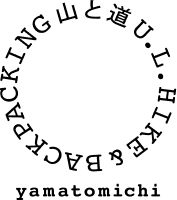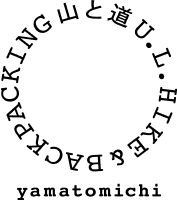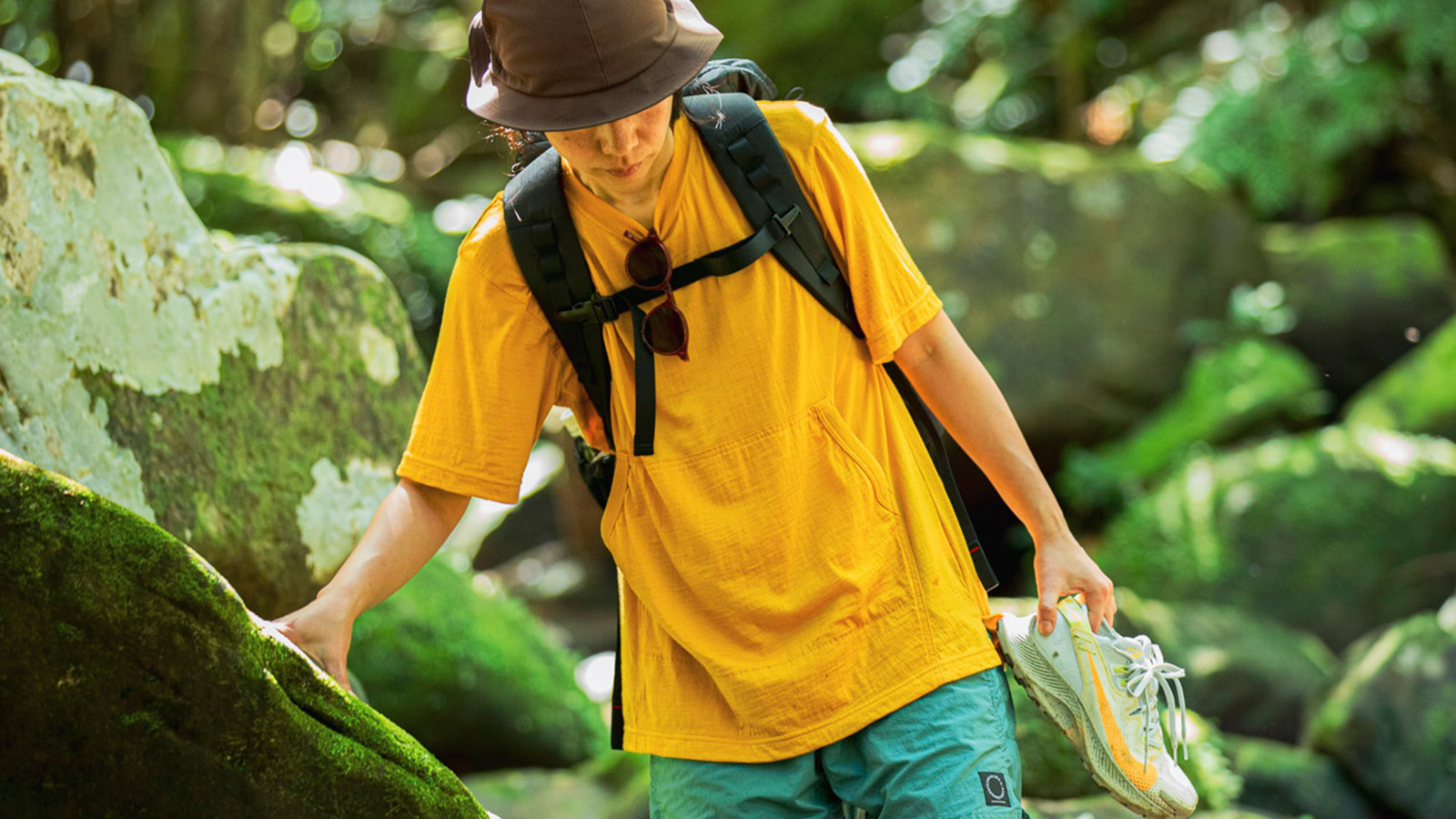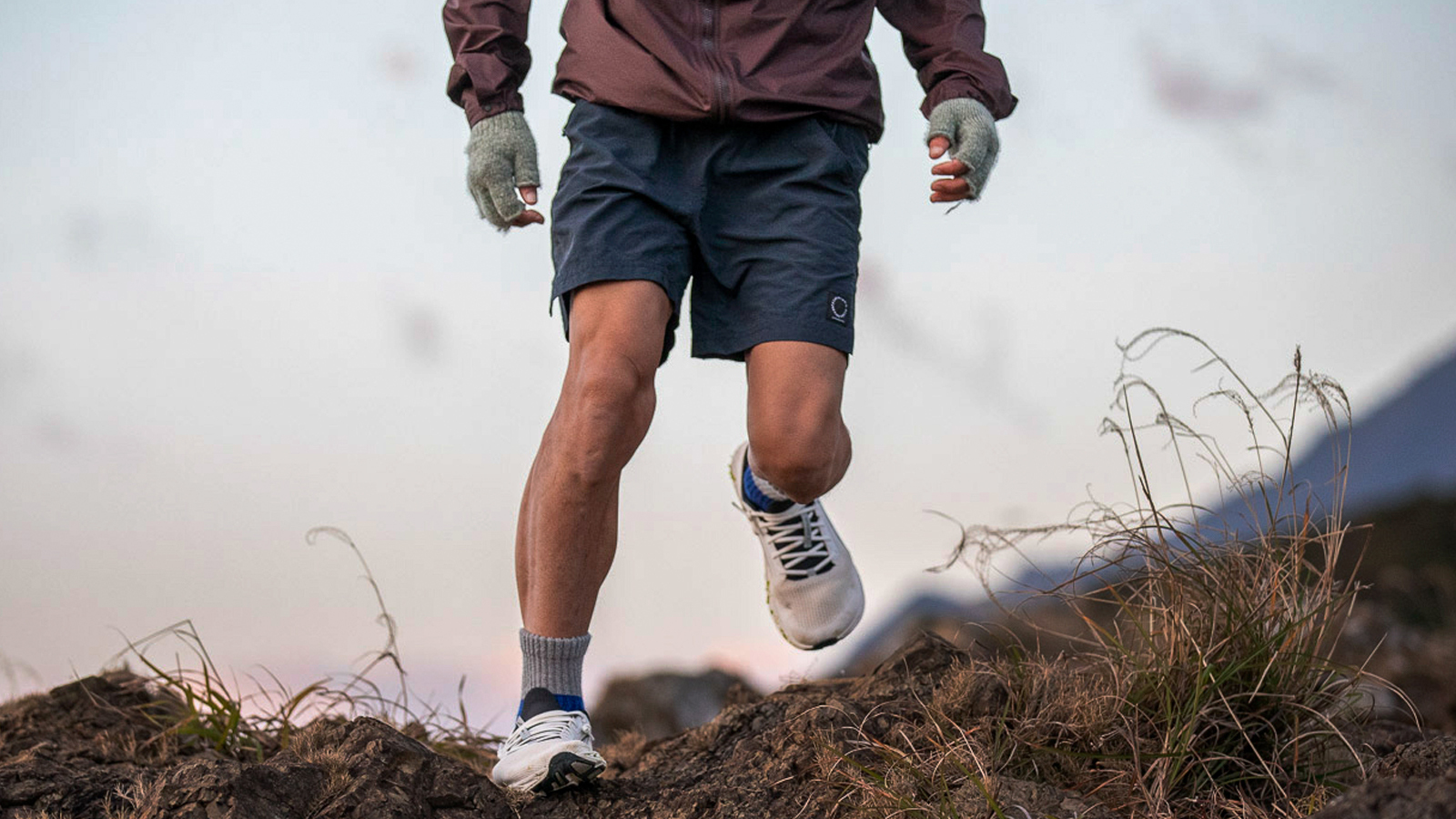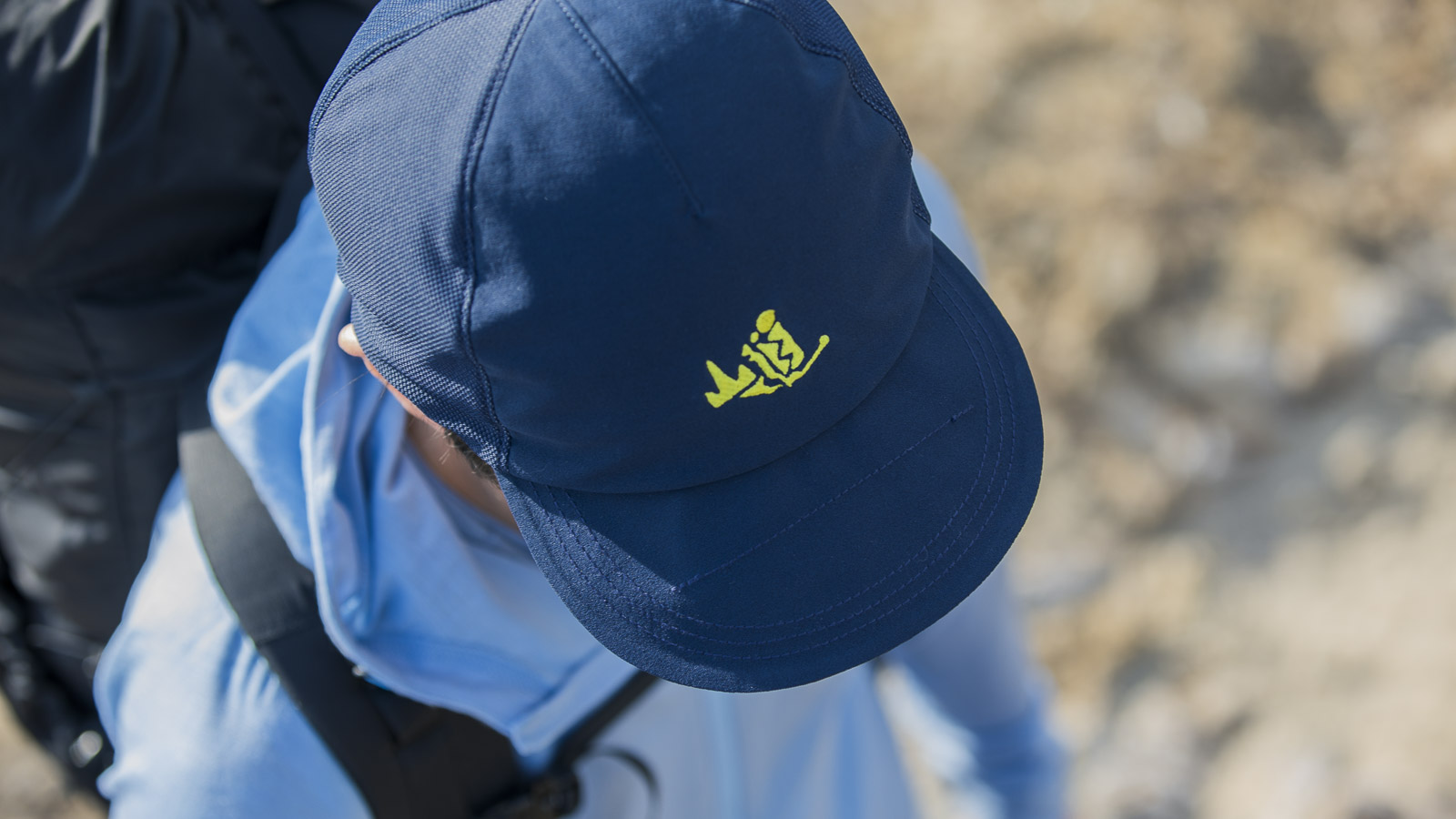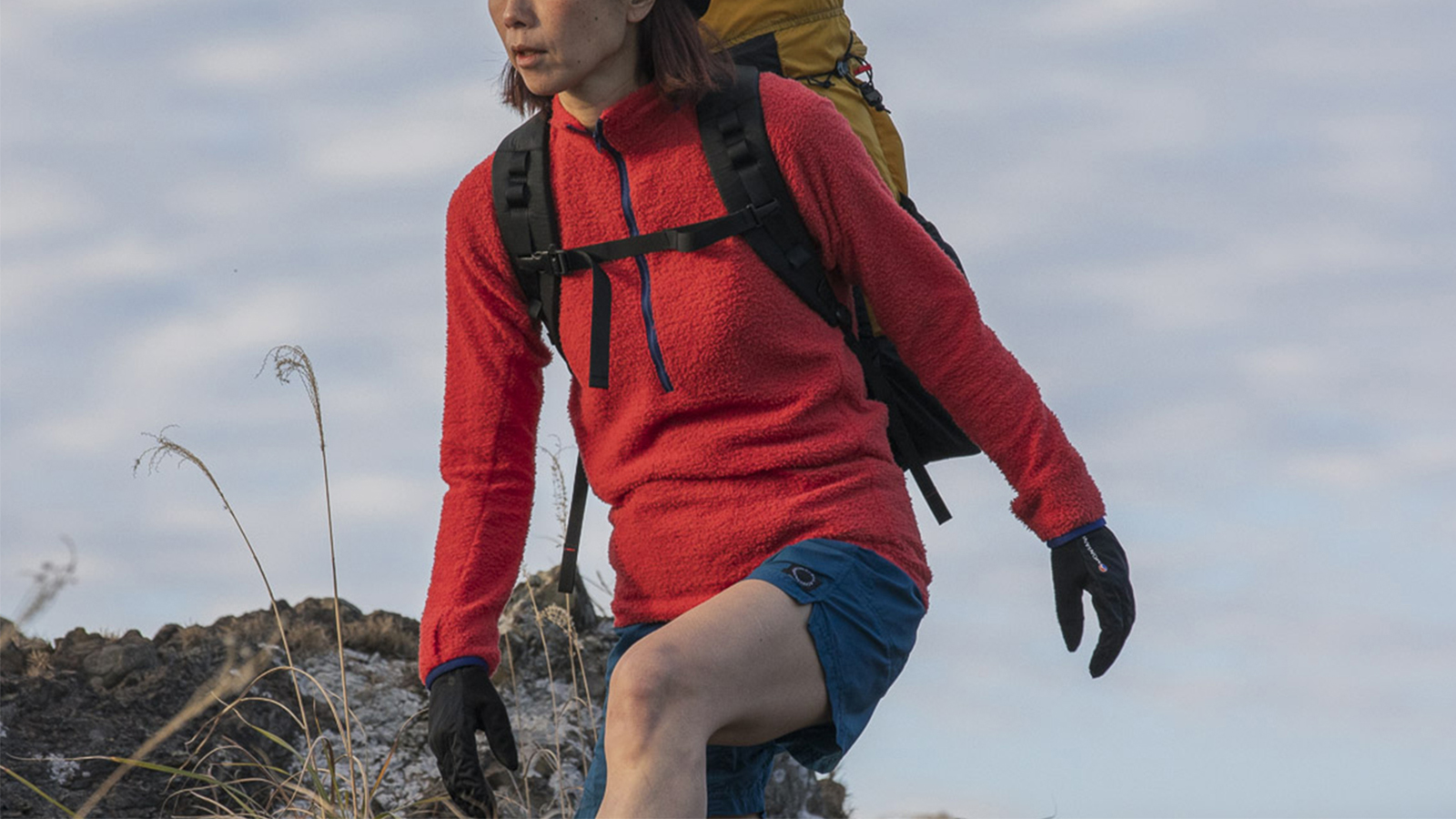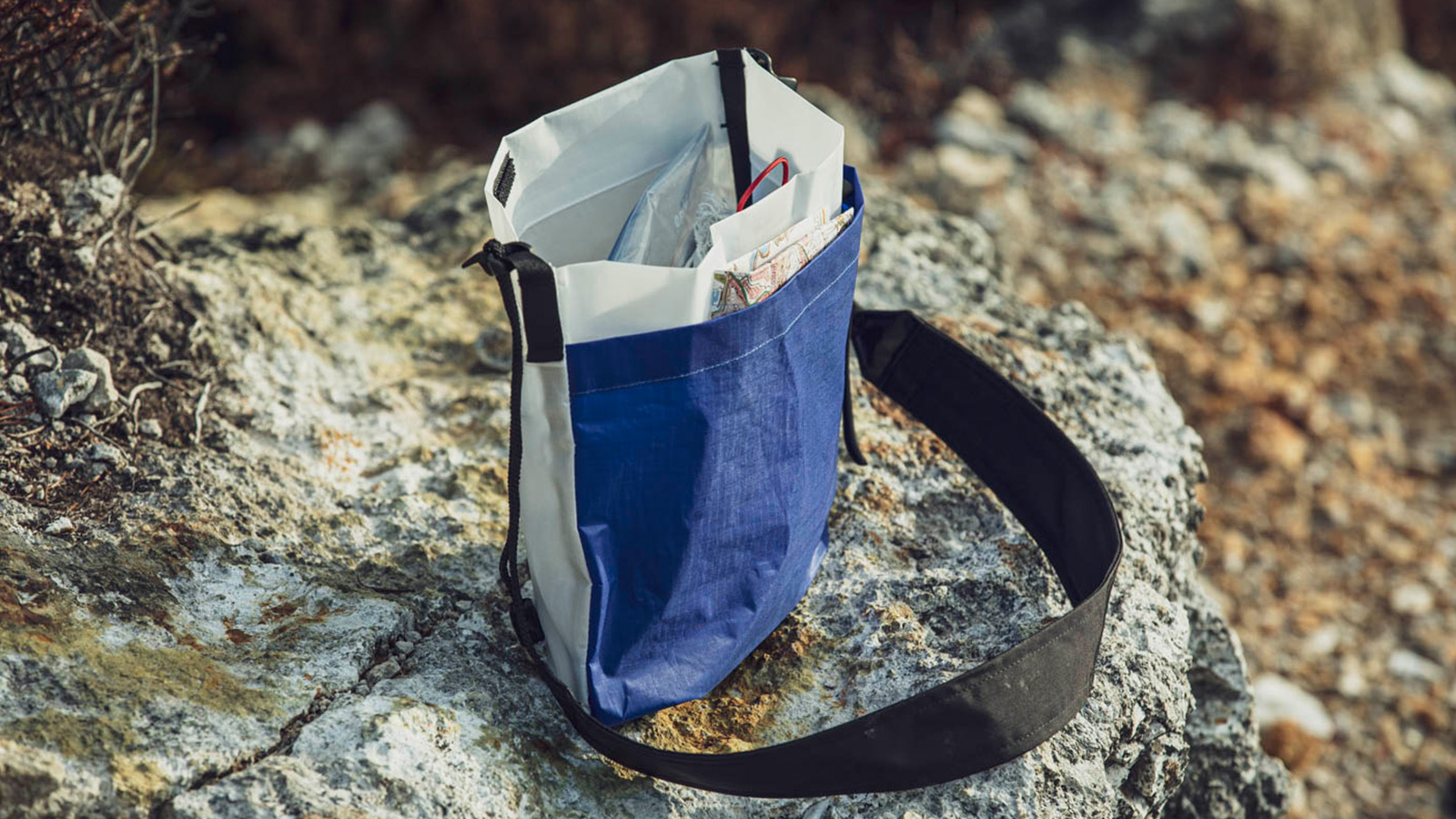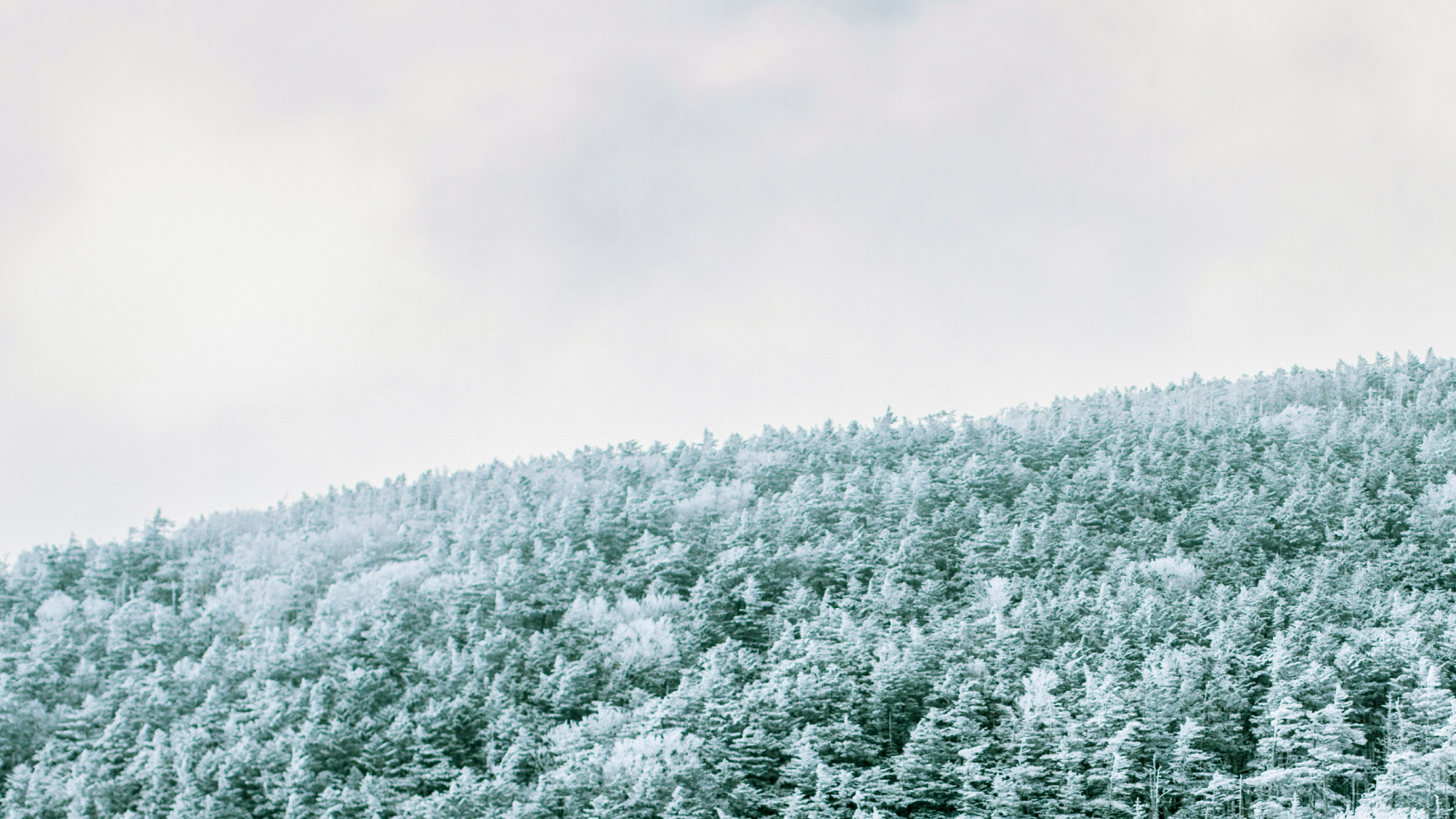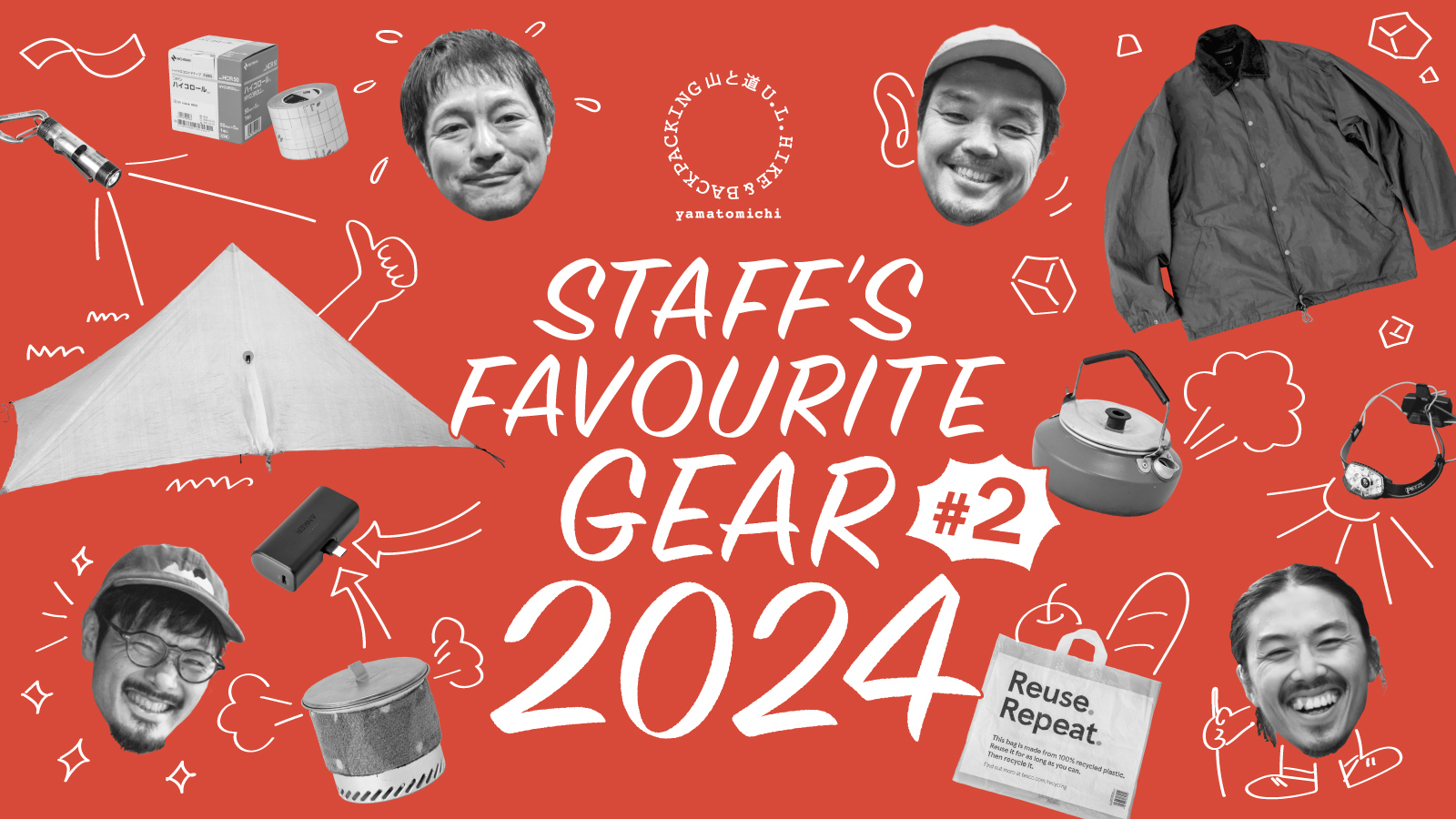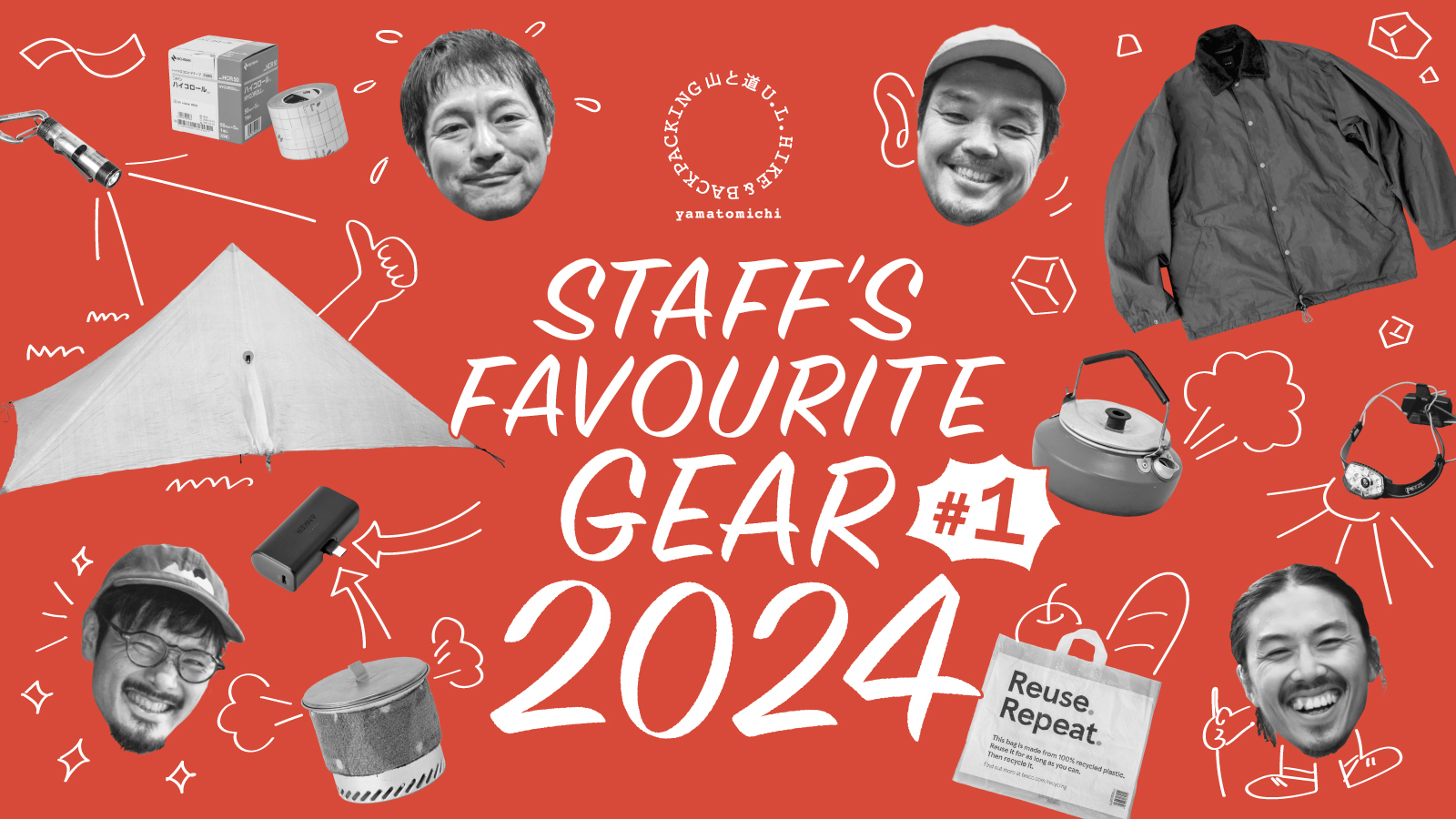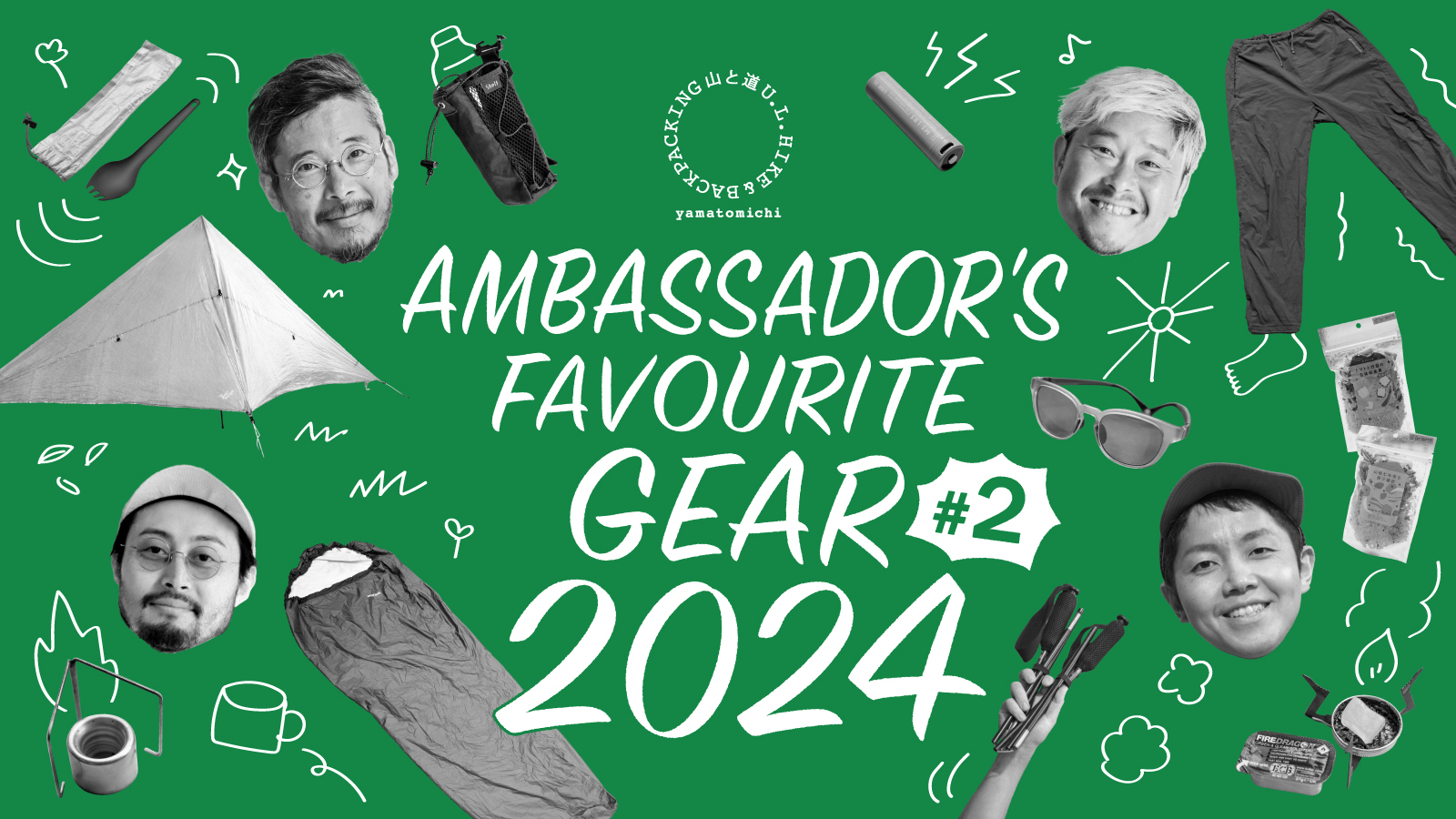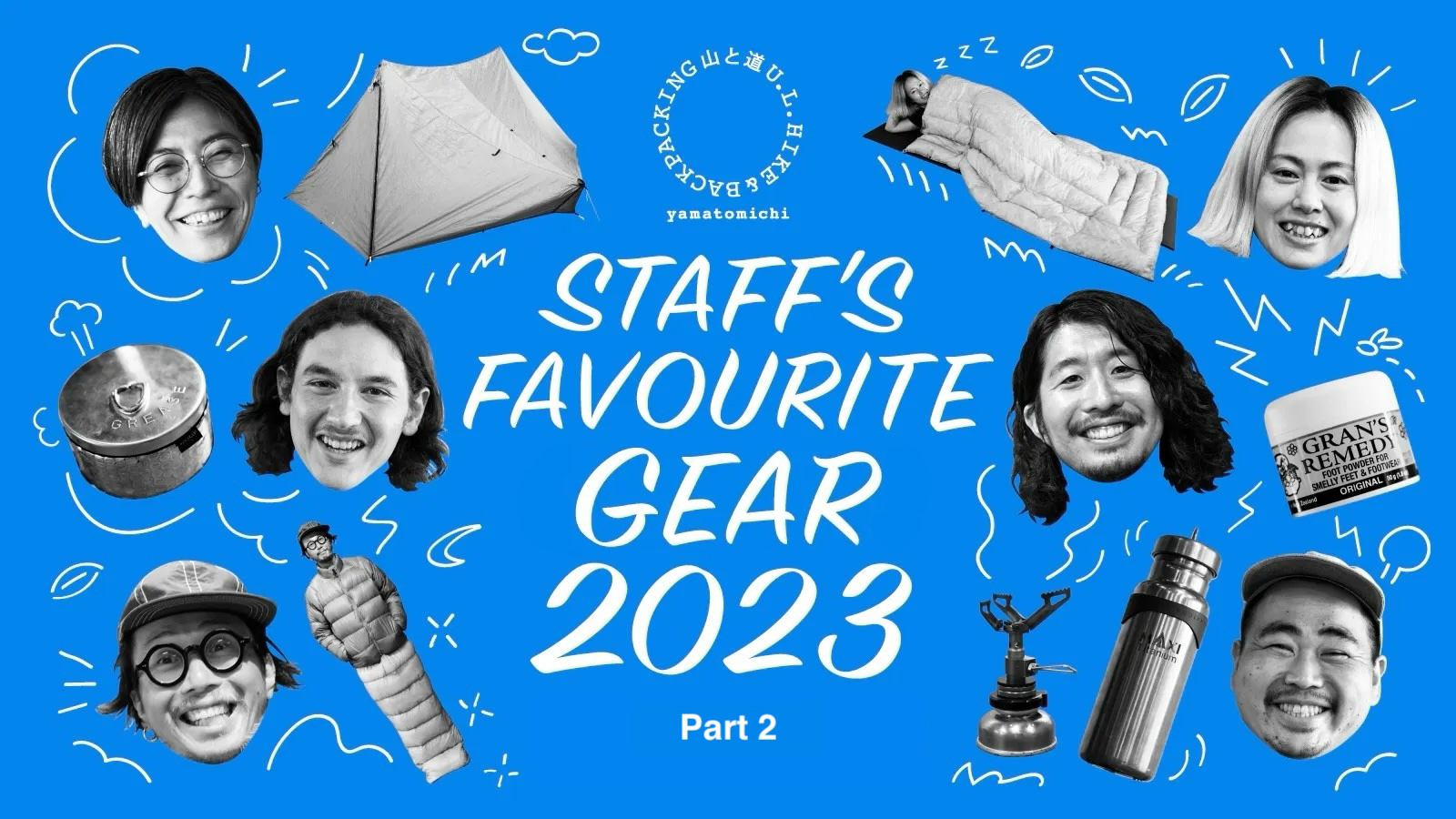Yamatomichi Kyoto Shop Staff #2
Support: Seimi Rin
Yamatomichi Kyoto Shop Staff #2
Support: Seimi Rin
In the hiking community, there are plenty of gear nerds who love to talk about their stuff. Yamatomichi employees are no exception. Recently, we asked the store staff at Yamatomichi Zaimokuza in Kamakura and Yamatomichi Kyoto to tell us all about the things they can’t do without on the trail. Our employees aren’t all seasoned ultralight hikers. Some are long-trail thru-hikers; others are outdoor novices. For the second installment of this two-part series, Yamatomichi Journals’ Masaaki Mita speaks with three staffers at Yamatomichi Kyoto: Akihiro Yamamoto (George), Ryota Mabuchi (Mabu) and Mayumi Syoji (Sho-chan).
Read the first installment of this two-part series with the Yamatomichi Kyoto staff here: https://www.yamatomichi.com/en/journals/310175
You can find recommendations from the Yamatomichi Zaimokuza (Kamakura) staff here: Part 1 https://www.yamatomichi.com/en/journals/307616
Part 2 https://www.yamatomichi.com/en/journals/308955

Yamatomichi Kyoto’s staff: (Top row, L to R) Akihiro Yamamoto, Ryu Kubota, Ryota Mabuchi, Yusaku Andoh; (Bottom row, L to R) Mayumi Syoji, Ayana Nagai.
Akihiro Yamamoto’s Gear Recommendations

Akihiro Yamamoto –– In 2015, when Akihiro’s child was 5 years old, he began taking his family on day hikes. While exploring giant trees and mountains in the Kansai region near his hometown of Kyoto, he became a regular customer at Yamashokuon (Yamatomichi’s former Kyoto base) where he discovered ultralight hiking and began helping out. After leaving his job in the fishing industry, he joined the Yamatomichi Kyoto shop staff while working on the side as an illustrator. Lately, he’s been going on multi-day (3 nights or more) camping trips, snow hiking, and bikepacking, while passionately sharing his own life-changing ultralight hiking experience with others.
Mountain Lover and Ultralight Hiking Pilgrim
Q: Can we start with an introduction?
AY: I’m Akihiro Yamamoto, a member of the store staff at Yamatomichi Kyoto. People call me George.
Q: You also work as an illustrator under the name Yamagasukinadake?
AY: I’m still just getting started.
Q: Don’t be modest! You’ve done an illustrated report for Yamatomichi Journals on the HLC Kansai Hiking Practice, which everyone should check out. How long have you been with Yamatomichi?
AY: Two years. I started helping out at Yamashokuon –– Yamatomichi’s Kyoto base before it opened the Yamatomichi Kyoto shop –– around January in 2022, and officially joined later that year, in August.
Q: When did you start hiking?
AY: It’s been about 10 years now. At first, I went hiking with my family to the nearby mountains. I had a job that didn’t allow me to take long vacations, so we’d mainly go for a day, hiking the same mountains around Kyoto and other parts of the Kansai region over and over again.
Q: But you got hooked enough to become the mountain-loving illustrator Yamagasukinadake.
AY: I really got into it. Normally, when people get into hiking, they want to climb higher mountains or see new landscapes, right? In my case, since I was limited to day hikes, I never went to the Alps or higher peaks. People tell me that’s unusual. I only seriously started going on overnight camping trips after joining Yamatomichi.
So, even though I’ve been hiking for nine years, it feels like I’m in my first year. My gear and hiking style are still evolving.


Q: It’s a fun moment. Everything is still new and fresh…
AY: Truly, everything is so new. But I’m still not used to hiking in unfamiliar mountains. For me, being in the mountains was more about finding peace. Venturing out on challenging routes feels fresh but also a bit nerve-wracking.
Q: You recently went to Japan’s Northern Alps for the first time.
AY: It was incredible.


Q: You must have thought, ‘I didn’t know Japan had such amazing places!’
AY: Exactly. And because of that, I think I’ll be able to enjoy it for a long time to come. It feels like a new beginning.
1. Bear Bell (formerly, Yamashokuon door bell)
Q: Could you share your gear recommendations? First up: Is this a bear bell?
AY: I use it as a bear bell. It was the bell on the door of the Yamashokuon shop, which closed in 2022.

AY: Whenever a customer came into the store, the bell would ring. When we were dismantling the shop after it closed and finally took off the door, it rang and I thought, ‘Wow!’
Q: So you asked if you could have it?
AY:Exactly. I was told the door was going to be thrown away, so I asked if I could just take the bell. I’ve kept it as a treasured item. The sound is really pleasant compared to the usual bear bells.
Q: It does sound nice –– though it’s a bit quiet, which calls into question its effectiveness.
AY: True! With gear, in general, I often use things that happened to be at home, things that I came across by chance or repurposed items. Things I’ve bought don’t seem to last. I end up feeling more attached to these serendipitous finds.
Q: Definitely, those kinds of items tend to be better.
AY: I think I’ll continue using this for a while, even though it doesn’t make much noise.
Q: The sound is nice.
AY: Very.
2. Ultralight Smartphone Clip (DIY)

Q: What’s this next item?
AY: This is something I made myself: an ultralight smartphone clip. ULSK, for short. Technically, it should be ULSC, but about five years ago when I made this, I named it ULSK, and in my family that name has stuck.
Q: It’s essentially a smartphone stand?
AY: Yes, that’s right. It started as a clip used to attach labels in the store. Originally, one side was for holding paper signs, but I modified it into a clip that can hold things on both sides. With this design, it stands vertically and holds its position quite well even at an angle.

Q: You’ve used it so much that even your family is familiar with it?
AY: That’s right. I made a lot of these, so I have a bunch attached to a hanger. I even use them to hang up laundry. I’ve tried smaller clips and different variations, but this size is ideal for holding a smartphone and also works well for gripping branches and other things.

AY: You can attach it anywhere, so you can hang things inside the tent, like mosquito coils, or use it for just about anything. It’s become such a part of daily life at home that it’s practically a family member.
3. Sea to Summit Ultra-Sil Pack Cover

Q: What’s next?
AY: This is the Sea to Summit Ultra-Sil Pack Cover, size XS. This was originally a pack cover I bought for my child, designed for 15L to 30L packs. A while ago, I made a handlebar bag for my bike, and I ended up pulling this out. I had bought it long ago to use as a rain cover and I found that it fit perfectly. Also, during the HLC Kansai Hiking Practice last year, the third day was the hardest because my pack became very heavy with rainwater. A pack liner is better for keeping the contents inside dry, but I think it’s also important to keep the pack itself dry, which reduces stress.
Q: Can this size fit on something like Yamatomichi’s MINI packs?

AY: It fits really well, actually even when the MINI is about 80% full. In addition to its use as a pack cover, it also works as a stuff sack for clothes, and you can hang it from the ceiling or keep it on the floor of your tent.

Q: It sounds like you can use it in various ways. Although pack covers have become less common among UL hikers recently, using a small one in this way might be a new approach.
AY: It was originally for my child’s pack which no longer fits. By giving it a slightly different role, it feels like it still has a purpose.
4. Yamatomichi UL Pad (cut)

Q: With that idea in mind, let’s move on to the next one.
AY: Next is a cut-off UL Pad from Yamatomichi.
Q: Did you cut a 200cm UL Pad?
AY: Yes. My wife had been traumatized by tent camping and was reluctant to go with me. I thought about how to address that and looked at different options for bedding. I realized that the 100cm mat (the half-length version of the Yamatomichi UL Pad series is 100cm long) was not quite enough. I wanted something a bit longer that could cover from the head to about the thighs. I was thinking of buying a 175cm UL Pad and cutting it, but then I wondered if I could make something from a 200cm pad.
Q: There are 100cm, 175cm, and 200cm UL Pads available.
AY: I bought a 200cm pad and cut it to 130cm for my wife, but I started to find the remaining part interesting. I also cut 6cm off the width, making it 68cm x 44cm.
Q: How does it feel when you lie on it?
AY: It was completely fine, with a width like this. If it were 4-5cm thick, like an air mat, it would feel too narrow and your shoulders would fall off. But since this is only 1cm thick, I didn’t feel like I was falling off at all.

Q: How about the length? The half-length UL Pad is 100cm, so this one is about 30cm shorter.
AY: It is quite a bit shorter, but I think it’s sufficient as long as it covers from the shoulders to the hips and if I use a pillow for my head. For the lower body, I use the Minimalist Pad that comes with the MINI or MINI2. Also, when rolling it up and putting it inside my backpack, this size is just right. When using a 100cm pad in a MINI, it wraps around one and a half times, and the extra half wrap can press against your back, if not packed right. But with this size, it wraps around just once, so there’s no thick part that can cause issues.


AY: Also, the width is 6cm shorter. So when I roll up a 100cm UL Pad and pack it, it looks like a chimney and makes the backpack appear bigger, which I don’t like. But with this size, it fits neatly and maintains a good shape when packed. So, actually, this size was determined with the packing shape in mind rather than because I was trying to trim the sleeping pad to the minimum.
Q: That’s the opposite of how you’d normally end up with something like this.
5. Arc’teryx Norvan SL shoes

Q: And your final recommendation?
AY: So far, I’ve only shown things I’ve used for a long time or made myself. For my last item, I have something that I recently bought: Arc’teryx’s Norvan SL shoes. (These are currently only available in Japan in one color, Arctic Silk/Euphoria. In the US, Arc’teryx sells three versions of the Norvan LD.)
Q: Trail running shoes. The mesh is so extensive that it’s like a water-and-land shoe.
AY: Recently, I was wet for four days straight in the Northern Alps, and it was really uncomfortable. So, I decided that for my next shoes I would prioritize dryness. I heard that these can even be worn barefoot, so if my socks get wet, I can just strip them off.
Q: They look like they drain really well and the material doesn’t seem to retain moisture at all.

AY: Arc’teryx has a shop in Kyoto, so I went and asked them a lot. The best thing about them is that there’s no seam inside that can get caught on your toenails, if you’re wearing them without socks. Even barefoot-friendly shoes can have toenails snag on the inside seams of the upper, and I’ve had my toenails fall off a few times because of that.
Q: The underside of the top of the shoe is flush.

AY: They’re really thinking about scenarios like wearing them barefoot and wading into rivers, which I think is fantastic. Especially this summer, I’ve been doing a lot of river-based hiking, so this is perfect.
Q: And they’re lightweight too.
AY: They weigh 171g, and they don’t have a separate insole.
Q: Simple.
AY: And the fit is such that you might not even need to tie the laces. Try them on.

Q: (After trying on the shoes) They feel a bit narrow.
AY: Apparently, Arc’teryx made these slightly wider than their previous models. I just got them yesterday, but before that, I bought trail running shoes from a different brand last year. Those didn’t even last 10 months. I was shocked by how flimsy they were.
Q: That’s the era we live in. Trail running shoes are seen as disposable items now.
AY: I didn’t expect the upper to wear out while the sole was still fine. I would understand if the sole had worn out first.

Q: Serious runners probably wear them out within a few months.
AY: That seems to be the norm nowadays. I used to only consider wide shoes and ended up narrowing down my own choices too much. When the Arc’teryx store opened in Kyoto, I got to talking with them, and that’s how I discovered these.
Q: Are there other colors available?
A: Only black.
Q: You must be excited to try them out in the mountains!
Ryota Mabuchi’s Gear Recommendations

Ryota Mabuchi –– Born in Kyoto, Mabuchi picked up the guitar when he was 15. After graduating from high school, he moved to Tokyo to pursue a career in music, working as a composer, arranger and guitarist. However, following an operation, he struggled with numbness in his hands, which led him to explore his skills in room styling, video shooting and editing and coaching. Later, he returned to Kyoto and developed a passion for camping in the mountains where he’d played as a child. Mabuchi learned about ultralight hiking and, realizing how the philosophy could be woven into his lifestyle and work, committed himself to the ultralight hiking world in January, 2023.
From Backyard Camper to Ultralight Hiker
Q: For starters, could you introduce yourself?
RM: I’m Ryota Mabuchi, also known as Mabu. I joined Yamatomichi in June, 2023.
Q: You came on board with the opening of the Yamatomichi Kyoto store?
RM: Yes, I had never experienced working in this way before. I’m just starting to get used to it.
Q: How far back do your mountain adventures go?
RM: I only started hiking in January, 2023. Before that, I spent about two years camping — going into the mountains to camp by myself before returning to the city.
Q: Did you drive to your campsites?
RM: I used a car for remote campsites, but mainly I would stuff all of my gear into a backpack and go.
Q: Did you mainly camp at designated campsites?
RM: At first, I stayed at campsites, but…
Q: Or did you venture out to places that were less clearly marked?
RM: Exactly. I’m from a rural area of Kyoto. From there, I’d just go into the mountains and find a place to camp.


Q: How did you get started hiking?
RM: With camping, there’s a lot of downtime, and in the end, there wasn’t much to do besides eating. I started getting bored. I was torn between two possible next steps: learn bushcraft, where you make things like chairs from tree branches, or try hiking –– walk, camp in the mountains and return. I figured hiking would be better for building stamina.
Q: How was it when you actually started walking?
RM: When I started off, I was surprised by how little endurance I had. But I found walking to be really fun, and the time spent at the campsites was enjoyable, too. Plus, I was able to venture deeper into the mountains than I’d been when I was just camping, and that made it all the more enjoyable.
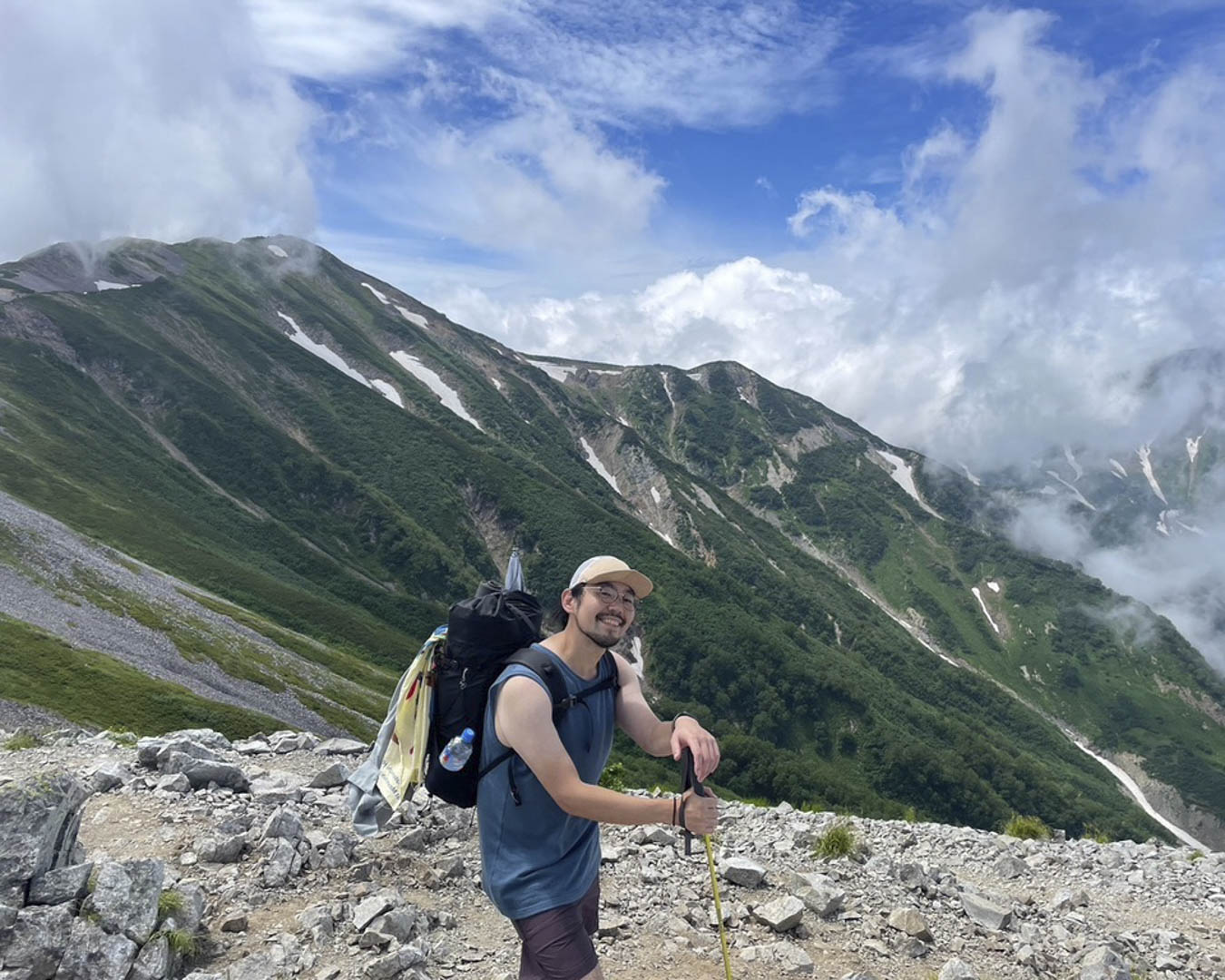

Q: When you get up into the mountains, there are so many great campsites.
RM: Exactly. That’s something I wouldn’t have realized without actually walking there myself. That experience made me grow to love both camping and hiking even more.
Q: So, since you have such a passion for camping, could you give us a rundown of some of your gear?
1. FireBox’s G2 Firebox Nano

RM: One thing that got me really hooked on the outdoors was campfires. I wanted to hold onto that experience when I hiked to a campsite. One of my favorite items is the G2 FireBox Nano, a titanium stove for burning wood.
Q: This is one of the smaller wood-burning and multi-fuel stoves available.
RM: Exactly. It unfolds quickly, and the design is really clever. I mainly burn small twigs that I find in the forest, but you can also stick longer branches through the round openings in the side.
Q: It’s small, but really functional.

A: And it’s really durable, so I’ll be able to use it for a long time. One thing I particularly like is that there are two openings to feed in the branches, and each one is set at a slightly different height. When you insert long branches, they cross each other, which prevents the burning efficiency from dropping. The stove is designed with great precision. If you look at it from above, it’s not a perfect square — it’s a bit irregular in shape.
Q: So, it’s not bent from the heat?

RM: No, it’s designed like this so it can fold flat. Its beautiful design is one of the things I really love about it. It unfolds very quickly, and by adjusting the legs, you can support a pot with a larger diameter, or even a smaller one. With just this stove, you can take your time cooking, and also enjoy the fire.


Q: It’s perfect for having a small campfire on your own.
RM: Exactly. The burning efficiency is so good that it doesn’t leave large amounts of ash. Since it’s not meant for large logs, it’s quite convenient.
Q: Completely white ash.
RM: Which makes the cleanup really easy. That’s another great feature.
Q: It’s probably good to have one of these.
RM: Yes, to enjoy your campsite.
2. Exotac Nanospark

Q: What’s the second item?
RM: This is the Exotac nanoSPARK. I used to carry a lighter, just for igniting stoves, but with a lighter, you need the flame to reach the bottom of the stove, which can be a bit tricky.
Q: You end up shouting, “Ah! Hot!”
RM: Sometimes it wouldn’t light on the first try, so I’d have to try several times. But with the Exotac, the sparks fall directly into the alcohol stove. You just need to spin the flint wheel.

Q: It produces a lot of sparks.
RM: It can ignite on the first try, so it’s really great. Plus, since it doesn’t need fuel, it can be used almost indefinitely.
Q: I didn’t expect it to be so powerful. I thought you’d have to try several times before it would light.
RM: It works in one go. For solid fuel or alcohol fuel, you just need to drip a little fuel on top and then use this to light it, and it will catch immediately.
Q: How about using it to start a campfire?
RM: This handle is hollow and contains cotton that you can ignite.

Q: The flint wheel part seems to be the tool part, which is why I thought the handle could be shorter. But actually the handle has a function, too.
RM: Exactly. Inside the handle is a material (cotton) that catches fire easily.
Q: Can you refill it?
RM: Yes, you can buy refills separately.
Q: Will it work when wet?
RM: The flint wheel fire-starter part works even when wet. Want to try getting it wet? There’s a waterproof gasket inside the handle to keep it dry.
Q: Nice! I knew that this product existed, I hadn’t realized how powerful it is.
RM: It’s really powerful. And I love that it’s not a disposable tool. The cool design –– the fact that it’s long-lasting and simple and useful –– make it one of my favorites among the gear I own.
3. Hyperlite Mountain Gear’s Essential Umbrella

Q: This is the third item? Hyperlite Mountain Gear’s…
RM: Essential Umbrella.
Q: I often see EuroSCHIRM or Six Moon Designs umbrellas, but this is my first time seeing a Hyperlite umbrella.
RM: I realized the importance of umbrellas when I participated in HLC Kansai’s Daikō Mountains One-Night-Two-Day UL Hiking Workshop in April, 2023. It rained one day. I had a cheap folding umbrella, while everyone else had umbrellas like these. I thought they were simple and cool, and I appreciated how convenient they were to open quickly when the rain started coming down. After that, I went home and started researching different umbrellas, and that’s when I came across this one from Hyperlite. One of its key features is the double-layer canopy, which lets wind pass through when you encounter strong gusts.

Q: Wow.
RM: I was skeptical at first about whether it would really make a difference, but it actually does.
Q: So it deflects the wind?
RM: It deflects the wind quite well. Lately, I’ve even been using it as a sunshade during my commute.
Q: Especially given how hot this summer has been. I wonder how it compares in weight to the EuroSCHIRM.
RM: It weighs 195g –– about the same. But it also has a tip (ferrule), so you can use it while walking, and the grip has a cord to prevent it from flying away. I’m thinking of using it as a roof by combining it with a fully waterproof bivy.

Q: With the bottom end of the bivy outside?
RM: If I can just shield my head with this umbrella, I might not even need to bring a tarp. That’s why I decided it was worth investing in this umbrella.
4. ULA Equipment’s ULA Rain Kilt

Q: So, what’s the fourth item?
RM: The ULA Rain Kilt from ULA Equipment –– a rain skirt.
Q: It’s called a Rain Kilt but it’s actually a skirt?
RM: Yes. The great thing about it is that you can put it on in no time the moment the rain starts coming down. With rain pants, you have to take off your shoes, which can be a hassle. You might think, “I’ll wait and see for a bit.” But with this, you can just pull it out and put it on right away. You can avoid feeling regret later.
Q: Is it easy to put on and take off?
RM: Super easy. When you put it on, it’s like this — quick and straightforward, so you don’t even have to think about it. Also, the hem has Velcro, so if you spread your legs, it just opens right up.

Q: So this part completely opens up?
RM: Yes, it turns into a really simple single piece of fabric. Since it has Velcro, it attaches to itself while you’re walking. And even if it comes undone, you don’t really need to go out of your way to fix it.
Q: I like that it has a pocket, which it can be stuffed into.

RM: You don’t have to worry about losing a stuff bag, and there’s no hassle in searching for it, either.
Q: After you take it out of the bag, you don’t want to be wondering, “Where did I put the bag?”
RM: Exactly. You end up wasting a lot of energy on something like that. This packs up quickly, and is compact.
Q: If you’re wearing shorts, this might be all you need.
RM: Maybe a bit risky if you’re on higher mountains, but for lower elevations in forested areas without much wind, this is a good option for throwing on quickly and getting moving.
Q: And at 80g, it weighs less than rain pants.
5. Mountain Laurel Designs MLD Superlight Solo Bivy
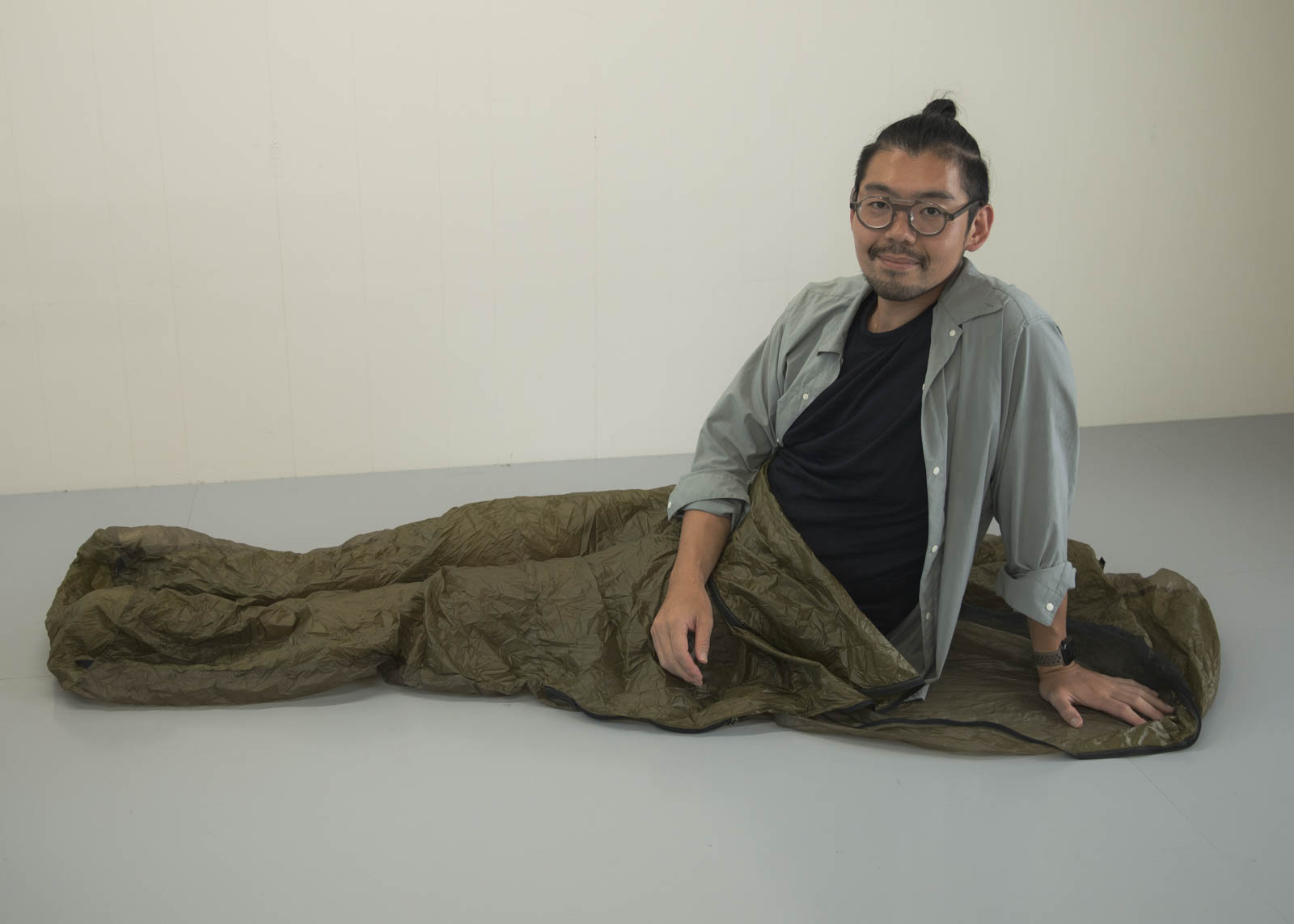
Q: And your last item?
RM: This is the Mountain Laurel Designs MLD Superlight Solo Bivy.
Q: The packed size is really small.
RM: Yes, it’s small. It’s water-repellent –– not totally waterproof, though.

Q: So it’s more like a bivy that acts as a sleeping bag cover?
RM: Exactly. And it’s made of a breathable fabric, so there’s not much condensation.
Q: The part around your face is mesh?
RM: Yes, so it’s easy to breathe. When I sleep on the ground, I usually use a tarp or Six Moon Design’s Gatewood Cape. If I’m just sitting somewhere, bugs don’t bother me. When I sleep, I want it to be deep, and having just a mesh around my face is good enough. The Gatewood Cape weighs about 280g and this bivy 170g –– about 450g combined, so they’re lightweight. If there’s condensation inside my tent, the bivy’s water-repellent coating helps, so even if some water drips onto me, my sleeping bag won’t lose its insulating loft. If the weather is good, I sleep in just the bivy, which is what I did at the Yamatomichi festival. Although the outside was wet with dew, my bag’s loft inside was fine, so light dew hasn’t been a problem so far.

Q: It opens all the way to the sides?
RM: Yes, that’s another great feature.
Q: And at 170g, it’s lighter than the S.O.L. Escape Bivvy (241g), about the same weight as the S.O.L. Escape Lite Bivvy (156g). The Escape Bivvy seems like it would be warmer, though.
RM: I’ve used other bivvies from different brands, and I often had issues with condensation. But with this one, I haven’t had that problem yet, which is why I like it so much. When I pitch a tent, I usually stay inside the bivy, sitting cross-legged and cooking or boiling water inside it.
Q: It’s spacious enough to do that?
RM: Yes, it’s roomy enough for that kind of lazy setup, which is what I love about this bivy.
Mayumi Syoji’s Gear Recommendations

Mayumi Syoji –– Since she was a university student, Mayumi has enjoyed camping and hiking in the mountains. Seeking a deeper connection with nature, she traveled to New Zealand, where she worked on farms, crisscrossed the islands and hiked the 32-km Routeburn Track and other trails. This led to a realization: She knew little about Japan’s mountains. After returning to Japan, Mayumi went for a multiday hike in the Northern Alps and was astounded by her friend’s ultralight gear. Later, at a club in Kyoto, she ran into Yamatomichi’s founder Akira Natsume and sound specialist Takeshi Azuma (Natsume’s collaborator on Yamashokuon), an encounter that led to her helping with the launch of the Yamashokuon shop. She has worked at Yamatomichi ever since. For more than a decade, she’s been living a migratory lifestyle: snowboarding in Hokkaido for two months in winter and returning to Kyoto in spring. She’s also a comedy and music connoisseur.
A Chance Link-up with Yamatomichi
Q: Please introduce yourself!
MS: I’m Mayumi Syoji, a staff member at the Yamatomichi Kyoto store. People call me Sho-chan.
Q: You’re the longest-serving staffer at Yamatomichi Kyoto?
MS: That seems to be the case, without my having even realized it.
Q: How did you start working at Yamashokuon, the forerunner to the Yamatomichi Kyoto?
MS: I was already using Yamatomichi gear –– the sacoche, for instance. I was into hiking, and while at a club called Metro in Kyoto, I saw Natsume-san (Yamatomichi founder Akira Natsume) dancing on the floor like crazy. My friend had organized the event and was talking with Natsume-san. I thought: “I’ve got to talk to him!” He told me that they were planning to open a store in Kyoto soon and then introduced me to sound engineer Takeshi Azuma, Yamashokuon’s owner. We ended up celebrating with champagne right there.
Q: You met them by chance as they were preparing to open Yamashokuon?
MS: Exactly. Construction had just started. Natsume-san was looking for people to help set up the store. I told him that I could help on my day off and gather up some friends. I ended up painting the walls, applying varnish.
Q: That was in 2017, and you started working at the store.
MS: It all happened quickly. Before I knew it, I was working at the Yamatomichi Kyoto store –– and I’m still here. It’s been a strange but wonderful connection, and I’ve had a great time.


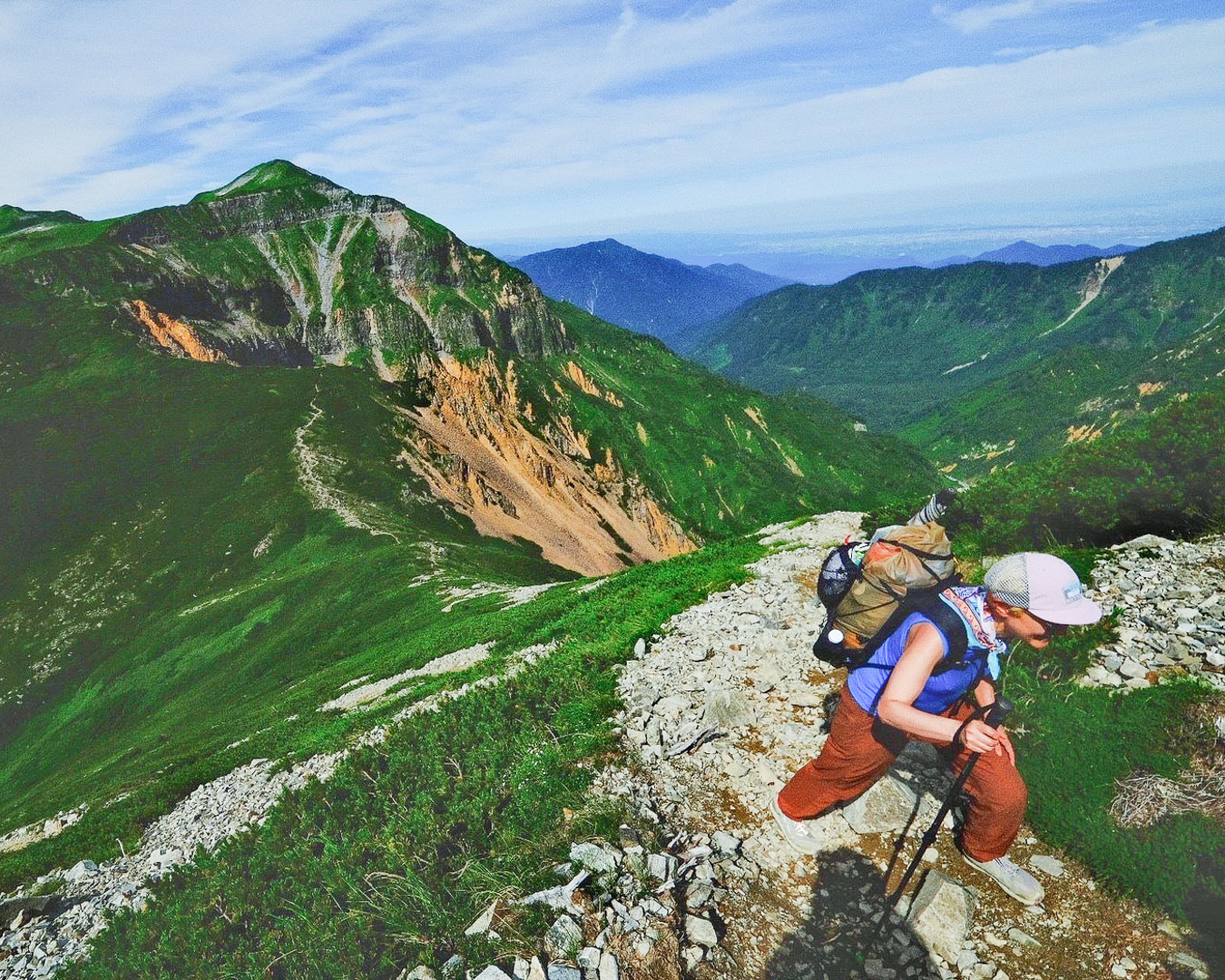
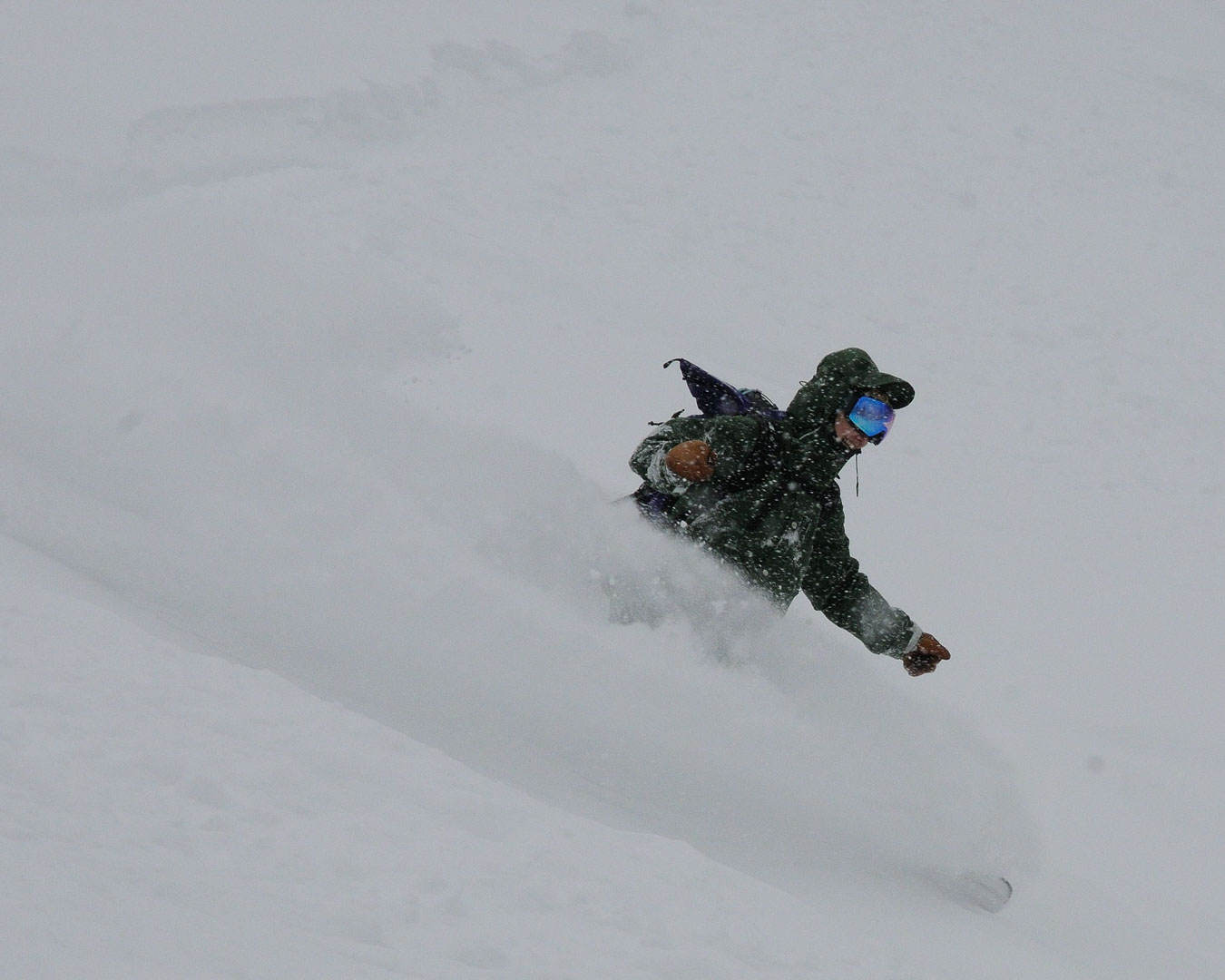
Q: Same with me! What sort of mountains do you hike?
MS: I usually head to the mountains near where I live or hike my favorite parts of the Kyoto Trail (an 84-km route near the city). In summer, I hike with friends in the Japanese Alps or other locales, and in winter, I go into the backcountry in Hokkaido. I gained an appreciation for the mountains during my working holiday in New Zealand. While working at farms, I hiked a lot on local trails. The scenery was so vast, and the forest flora was so different from what we see in Japan. That experience made me want to explore more Japanese trails, and that’s how I discovered Yamatomichi. I’ve been captivated ever since.
1. KM4K Tissue Pouch

Q: Could you talk about your favorite gear?
MS: First off: KM4K’s (pronounced Kamoshika) tissue pouch. KM4K is now based in Hakuba, in Nagano prefecture, but it started off in Kyoto. A friend of mine, who is a professional snowboarder, designs a range of products, from snowboards to apparel. The brand also produces a lot of mountain gear. I sometimes help them out with production, visit them or join them on photoshoots.
Q: You really seem to enjoy helping people out.
MS: I can’t help but get involved! When I head to the mountains, I can’t go without tissues. I bring about four or five packs for a two to three-day hike. I mentioned wanting a pouch for tissues and small items that I could get to easily, and KM4K turned the idea into a product.


Q: It’s the Syoji model!
MS: It makes me really happy. We discussed the size and everything. It’s made with thin, lightweight ripstop nylon. It has a tissue pocket as well as a small compartment, so I can store essentials when I have my period or lip balm or emergency items. I call it my Flower Picking Pouch.
Q: Do they have this in stock?
MS: It might be sold out, but we’ve talked about releasing it again in different colors.
Q: I usually carry a half-used roll of toilet paper with the core removed in a ziplock bag when I go to the mountains, but I’ve been thinking lately that pocket tissues might work. I want one of these.
2. MUJI Polyethylene Bottles and Tubes and Cream Containers

Q: What’s next?
MS: These small MUJI polyethylene bottles and tubes and cream containers.
Q: What do you put into these?
MS: One bottle is for skin toner; one for sunscreen. These tend to come in bulky containers, so I transfer them into these smaller bottles, which don’t leak and are convenient. In one bottle, I carry jojoba oil, which I use when I don’t need heavy sunscreen. Jojoba oil has UV protection and also works as a moisturizer. It’s versatile, and I can even use it on my hair, so I always carry it with me. In a small tube, I carry toothpaste, and in the cream case, I have shea butter, which is great for wounds, burns and moisturizing. When I want to freshen up, I sometimes wet a tissue with toner and use it as a refreshing wipe. Toner is great for feeling clean, so I always bring some with me.
Q: Most guys don’t think about this stuff! Sunscreen containers are too big for a single hike, so refilling them like this makes sense.
MS: Exactly! You still need to use it, though. Once, my ears got so sunburned that the skin started peeling. It was bad. The mountains are no joke.
Q: I’ll try it out.
3. Chabatree Forest Soup Spoon (from Kyoto Sajikame)

Q: What’s this spoon?
MS: I bought this teak spoon (Thai brand Chabatree’s Forest Soup Spoon) from Kyoto Sajikame, a kitchenware store. This is actually the same spoon that the Yamashokuon shop used for meals. I asked Azuma where he got it, and he sent me to Sajikame. Since then, I’ve been using it both at home and in the mountains. The long handle makes it good for eating instant rice or meals in deep packaging, and it feels nice.


Q: It looks really nice.
MS: The best! It’s not too big or small, and it’s lightweight. I take this and chopsticks. I don’t even need a fork.
Q: Plastic spoons feel like they take away from the taste of food.
MS: Exactly. I also use a titanium spoon sometimes, but it gets hot. With a wooden spoon, you don’t have that problem.

MS: Sajikame in Kyoto doesn’t only sell wooden spoons. It’s a shop with all sorts of tableware and kitchen goods. I have a lot of memories with this spoon.
4. Papier d'Arménie’s Carnet Tradition

Q: What’s this next one?
MS: It’s a type of paper incense from Papier d’Arménie.
Q: Where did you get this?
MS: It’s originally made in France, but I first bought it at a specialty shop. Whenever I find it, I buy some to use at home and to carry around.
Q: When do you use it?
MS: When I want to freshen the air a bit, or after using the toilet!
Q: But it might not help much in the mountains where the toilets can really smell.
MS: In the mountains, I typically use it in my tent.
Q: Does it burn slowly?
MS: It burns in an instant.
Q: And the scent lingers.
MS: Exactly.
Q: (Reading from the brand’s website) “Established in 1885. Papier d’Arménie is the world’s oldest home fragrance. It perfumes your home and removes any bad odors from cooking, tobacco, animals, etc.” It’s made from benzoin resin collected from the bark of a tree.

MS: Each sheet is divided into three by perforations, so you can tear one off easily. Or if you want to burn a lot, you can use more. I’ve been using this for years, not just in the mountains but also in my everyday life.
Q: Incense in the tent sounds good.
5. Miyazaki Honten’s Kinmiya Sharikin Pouch Shochu 90ml

Q: What’s next?
MS: Not gear –– is that okay? Yesterday, I happened to find this at a Don Quijote store: shochu distillery Miyazaki Honten’s 20% Kinmiya Sharikin Pouch (90ml, 20% ABV).
Q: How do you use it? You freeze it and it becomes sherbet-like?
MS: Apparently, yes. I guess the idea is that you add to the frozen shochu, and you can enjoy it cold. Taking a bottle of alcohol into the mountains is a burden, don’t you think?
Q: With this, you don’t need a bottle.
MS: Exactly. It would be great if whiskey and other spirits came in this type of packaging.
Q: Definitely. Some people might find this amount just right. Personally, I need more. But you could just bring more of these.
MS: Bringing three or four of these and drinking one each day is a great idea.
Q: Or two to three a day.
MS: It would be great if they sold these at mountain huts as well.
Q: Absolutely. Even better if they were already frozen.
⑥ Mikikurota - Fruits Sack (Melon)

Q: And the last item?
MS: This is a Mikikurota fruit sack. This is the 3L Melon sack.
Q: I believe there are different sizes based on fruits. Is this the largest one?
MS: This is the mid-sized sack. (Mikikurota sells five sizes, from the smallest 0.2L Mikan to the largest 8.5L Suika.) I find the concept charming, and I like that I can see what’s inside.
Q: Wide-mouth stuff sacks are definitely better. I feel like a long, narrow sack is unnecessary.
MS: I’ve used this a lot. The handle is very convenient, and if you attach a strap to the loop, it can also be used as a small shoulder bag.

Q: If you look closely at the craftsmanship, the seams are amazing.
MS: Exactly. It’s cute but also practical. Another thing that I do is put a headlamp inside the sack, diffusing the light, and then I hang it inside my tent.

Q: Masterpiece!
MS: I think I bought this at the first Kyoto Hiker’s Gear Party in 2018. A memorable purchase.
